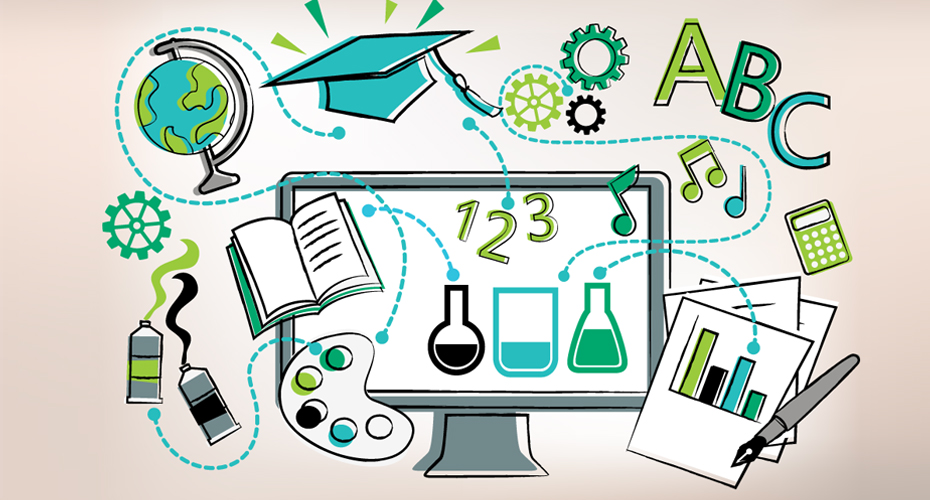Online learning is increasing the access to education and training. However the quality of the courses is very mixed. I have gathered some of the problems that I have experienced and suggested some solutions.
Over the years I have used online learning to increase my knowledge about a wide range of subjects and develop new skills. The online courses that I have taken include: creative writing, journalism and film making courses through the Open University and FutureLearn, developing business skills using digital technology with Digital Business Academy, learning about the underlying algorithms of Artificial Intiligence by entering into Kaggle competitions, and the impact functional programming on bioinformatics by solving problems on the Rosalind website. I have enjoyed these courses and learned a lot but there are some key changes that could be implemented to improve the quality of future online course:
1. Course Description
Often the course description is aimed more at marketing the course rather than specifying what the student will achieve. Although this approach can attract student numbers it can fail to meet a students expectations by either being too easy or too difficult.
Another aspect is pitching the entry competence at too low a level for the course to attract numbers of students. For example “ … it involves no computer programming, although you need some experience with using computers for everyday tasks. High-school maths is more than enough”. But once the course has started the competence levels required suddenly shoot and up moves into highly advanced topics that would be considered difficult at first year university!
What is needed is a clear description of what the learner will achieve by the end of the course. One approach would be to have a simple quiz to help the student decide whether they had the correct competence level for the course. Another is a system that could be developed which would monitor the progress of the student and if they were struggling then other online course or additional material could be recommended e.g. top up via Khan Academy.
2. Rate of Learning
My experience has been that the rate at which new concepts are introduced and reinforced can vary: one minute the ideas are straight forward and clearly described with supporting examples but suddenly jump to new concepts which are difficult to understand. All this can make the rate at which I learn very difficult as I find myself going back to the beginning of the course to find the content that I misunderstood, or search the web for a better explanation.
Another barrier to the speed of learning is the presentation of the material. Unfortunately some of the material looks like cut-and-paste from a lecture notes, or worse, sections are written by different authors and are not consistent in the use of terminology. Sometimes videos are involved, but they can be difficult to link to the course content because they usually cover areas outside of the course.
Usually the student can monitor their own progress through the course by answering questions at the end of each section but the questions rarely test a deep understanding of the material. Also, the answer can be of the yes/no type but if the learning requires the application of a concept then the workings are not checked only the final answer. A lot can be learned from applying a concept and therefore it would be helpful to analyse and point out where the application was going wrong.
The courses produced by the Open University remain the benchmark for online learning and the book Teaching Through Self-Instruction: How to Develop Open Learning Materials gives an excellent description of the process of developing a course. Their approach could be adopted for future online courses. Another aspect is improving the style of writing and lessons could be taken from Look and Learn which was a British weekly educational magazine for children. Its aim was to inspire the imagination of its readers with sharply written articles and with a mix of photographs and diagrams gave it an overall feeling of adventure.
Finally, progress of the student could be be monitored using an approache similar to Knewton with its technology that adapts to students’ proficiency levels with each interaction. Students don’t have to complete a formal assessment or diagnostic to get the instruction and practice they need — it’s provided just-in-time as students work to complete assignments. For problems where the application of a concept is important then there is an opportunity to develop AI based technology using similar approaches to Q-Learning.
3. Student Support
An important aspect of online learning is the level of support provided to the student, which in most cases is via forums where questions are asked and fellow students help to answer them. The answers are usually voted on and the best one has the most votes. The forums that I have experienced have moderators but unfortunately their involvement has been minimal and therefore opportunities to help with learning have been missed. For example when a question is asked sometimes the people answering may answer a different question. If the moderator had intervened to tease out the underlying problem that is troubling the student then a better answer would be found. All forum moderators should be trained to get the most out of forum activity. Or technology could be developed to analyse the question and relate it to the course content in a way that provides guidance to an answer.
Another aspect is helping students who are struggling to keep up with the course due to motivation, or othe emotional issues. A lot of research has been done in this area for example the work carried by Ormond Simpson contains lots of practical advice.
Online learning has increased the access to education around the world which has had an impact on many peoples lives. However, the next challenge for online learning is to improve the quality of the course content so that the participants will approach the same levels as universities and therefore have a credible level of knowledge. This will require more investment in developing the courses as well as identifying new opportunities for ground breaking technology.





